Potpourri
Definition: A mixture of things, especially a musical or literary medley
Definition: A mixture of things, especially a musical or literary medley
To make the experience fit your profile, pick a username and tell us what interests you.
We found and based on your interests.
PowerDivider.ssxssx - 23.26 kB - 04/01/2020 at 03:48 |
|
|
Button.zipRasPi button debounce in python (library module)Zip Archive - 2.82 kB - 11/18/2019 at 17:22 |
|
I wanted a bedroom button to turn on the lights, one that was easy to just roll over and hit in the dark.
Without fumbling with a chain or column switch or such.
The box was purchased at HobbyLobby, the switches are big arcade buttons.
The steel slabs either side of the mechanism give the box a sense of weight and prevent it from sliding around on the tabletop, and the lithium battery will last decades.
An example of LLaVa, downloaded and run from Donald Papp's recent article.
[NB: This is not a comment on Justine Tunney's work, which is both excellent and valuable. I'm only pointing out that current AI systems leave a lot to be desired.]
The entire process took almost 24 minutes, and the description is *almost* accurate.
#
# LLaVa Command
#
/tmp/Pics: time /Data/llama/llava-v1.5-7b-q4-main.llamafile --image DSCF2753.jpg --temp 0 -ngl 35 -e -p '### User: What do you see?\n### Assistant:' --silent-prompt 2>/dev/null
The image features a large metal table with a silver top, sitting on
a white floor. On the table, there is an industrial-sized fan or
blower, which appears to be made of metal and has a circular shape.
This fan is placed in the center of the table, drawing attention due
to its size and design. The overall scene gives off a sense of a
workshop or a place where such equipment might be used for various
purposes.
real 23m40.456s
user 93m53.092s
sys 0m8.459s
The long execution time suggested that perhaps a smaller image would be faster, so I resized the image for a 2nd run.
The second run is completely inaccurate, with notably several hallucinated items.
/tmp/Pics/SmallImages: time /Data/llama/llava-v1.5-7b-q4-main.llamafile --image DSCF2753Small.jpg --temp 0 -ngl 35 -e -p '### User: What do you see?\n### Assistant:' --silent-prompt 2>/dev/null
The image features a room with a large metal table in the center.
On top of this table, there is an industrial-sized food processor
or blender, which appears to be made from metal and has a silver
color. The table occupies most of the space in the room, extending
almost all the way across the scene.
In addition to the main focus on the table and its contents, there
are several chairs placed around the room, with some located near
the edges of the image. A bench can also be seen in the background,
further emphasizing the room's purpose as a workspace or dining
area.
real 24m11.196s
user 96m11.241s
sys 0m6.162s
Food processor? Chairs?
This AI is not quite ready for prime time.
The original image was 4608x3456, the resized version (2nd run) was 533x44.
The image (large/small) given to LLaVa:
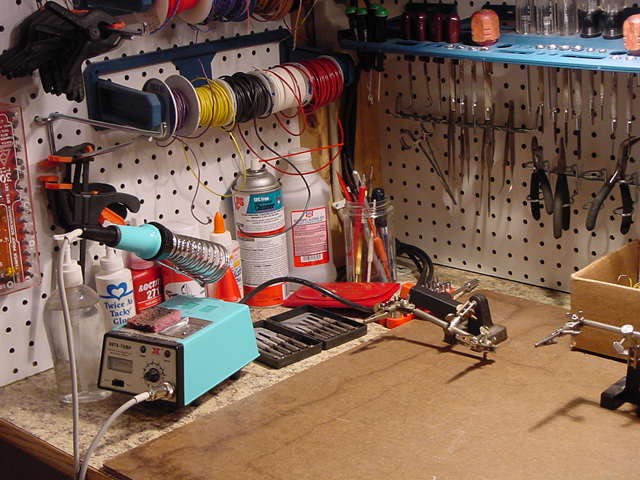
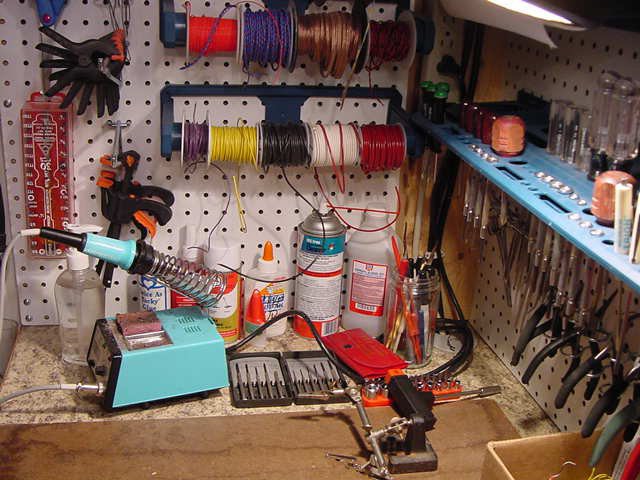
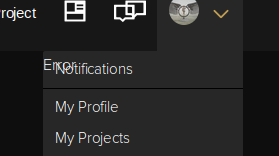
A recent Hackaday post describes the construction of a quarter-wave impedance matching circuit. The author was asking why his system shows a resonance at around 600 MHz.
Typing his circuit into SimSmith shows the following results.
The first image (above) shows the SimSmith simulation of his original circuit. The green line on the Smith chart shows that a 90 degree length of his 41.56 ohm cable will indeed match the 25 ohm load to - approximately - the 50 ohm generator. The line actually lands on 69.1 ohms, which reflects the fact that he's using a constructed 41.5 ohm line and not 35 ohm line (which would make an ideal match).
This next image shows SWR plotted as a function of frequency. His calculations indicate that the minimum SWR should be around 200 MHz, but was confused when his NanoVNA showed a minimum at 600 MHz.
The image above shows what is actually going on. I believe he's seeing the 2nd harmonic of his calculated frequency, and SimSmith indicates that there should be a 3rd harmonic as well.
SWR is not 1, which reflects the fact that his impedance match is not perfect - 69 ohms instead of 50 ohms - because his constructed transmission line is not the optimal value.
I needed to debounce a RasPi button in python, and found that the software in this link has problems: sometimes the button press is ignored.
Here's an improved version fixing the problem. It uses the GPIO hardware to initially detect the button press (rising or falling, or both) then uses a timer to detect changes in state for a user-selected debounce time.
A full library file implementation "Button.zip" can be found in the project files section, along with a simple test program.
DEBOUNCE_MS = 50 # Debounce time, in ms
UPDATE_MS = 5 # Update/check time, in ms
class ButtonHandler(threading.Thread):
def __init__(self, pin, func, edge='both', bouncetime=200):
super().__init__(daemon=True)
self.edge = edge
self.func = func
self.pin = pin
self.bouncetime = bouncetime
self.bounceleft = bouncetime
self.bouncing = 0
self.prevpinval = GPIO.input(self.pin)
def __call__(self, *args):
if self.bouncing:
return
self.bouncing = 1
self.bounceleft = self.bouncetime
self.prevpinval = GPIO.input(self.pin)
self.timer = threading.Timer(UPDATE_MS/1000.0, self.Tick, args=args)
self.timer.start()
def Tick(self, *args):
pinval = GPIO.input(self.pin)
if self.edge == GPIO.RISING and pinval == 0:
self.bouncing = 0
return
if self.edge == GPIO.FALLING and pinval == 1:
self.bouncing = 0
return
if pinval != self.prevpinval:
self.bounceleft = self.bouncetime
self.bounceleft -= UPDATE_MS
if self.bounceleft <= 0:
self.bouncing = 0
self.func(*args)
self.prevpinval = pinval
return
self.prevpinval = pinval
self.timer = threading.Timer(UPDATE_MS/1000.0, self.Tick, args=args)
self.timer.start()
Reference to a discussion online.
Here's a picture of the PCB holder I designed. It has magnets in the base, to stick to any metallic surface.
The magnets have a surprisingly strong and stable holding force - enough that the system can hold a PCB on the metal bed of a CNC mill without bolts.
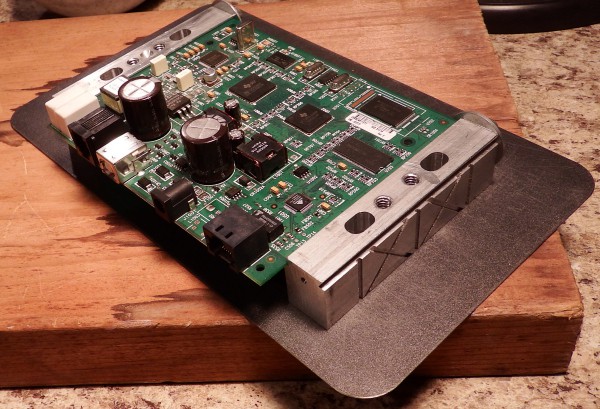
This one has washers at the far ends. This PCB slides in from the front and stops at the washers. Reverse one side (one washer in front, one at the rear) and the PCB is locked in place.
The side slots allow me to hold a PCB vertically or at a 45 degree angle. The elongated holes are for mounting on a mill table, and the threaded holes are for some attachments I made.
After nosing around the completely undocumented Cinnamon code for several more hours, I could find no place where the taskbar stores it's task list.
I *did* find a function that let me safely poke around in the source files and see what information is available:
Main.warningNotify(String1,String2);
Later, I found a function that appears to get an environment variable:
GLib.getenv(ORDERENV);And one that appears get the workspace name and index:
Main.getWorkspaceName(global.screen.get_active_workspace().index());So I wrote a better version of the Alt-Tab switcher that lets the user use environment variables to set the sort order.You can find the new file and documentation on the GitHub project, including installation instructions and more documentation.
Check the GitHub project, for more/better documentation.
The new Alt-Tab order is determined by the CLASS and TITLE of the application window.
The CLASS identifies the application, and will be something like "Firefox" or "Nemo".
The TITLE identifies what the application is showing, such as a specific web page (Firefox) or directory (Nemo). The TITLE is the string shown in the taskbar, and will be something like "Google - Mozilla Firefox" (for Firefox) or "Home" (for Nemo), depending on what your application is showing.
To show all window classes and titles:
# # List all window titles # wmctrl -l -x | awk '{print substr($0,index($0,$5))}' # # List all window classes # wmctrl -l -x | awk '{ print substr($3,1+index($3,".")) }'
Environment variables in the user's .profile file can define the sort order.
The ALT_TAB_xxxx variables contain multiple CLASS:TITLE specifiers separated by semicolon.
Workspaces are numbered from 1, not zero. The first (leftmost) workspace is "WORKSPACE1".
The variables are part of the user's original login, so changes must be made to the user's .profile file (and not, for example, the .bashrc file). After editing, log out and log back in for changes to take effect.
Example1:
export ALT_TAB_WORKSPACE1="Firefox;Nemo;Gnome-terminal" export ALT_TAB_WORKSPACE2="Gnome-terminal:Edit;Gnome-terminal:Work;VirtualBox;Firefox;Nemo"
In WORKSPACE1 the alt-tab listing will have firefox leftmost (in first position), Nemo in 2nd position, the terminal in third position. Other windows will be to the right of the terminal.
In WORKSPACE2 the alt-tab listing will have both terminals leftmost, but the one titled "Edit" will come before (to the left) of the one titled "Work", in 2nd position. VirtualBox, Firefox, and Nemo will follow, then any unspecified windows.
Other workspaces will be sorted by title (the default).
Example2:
export ALT_TAB_ORDER="Firefox;Nemo;Gnome-terminal" export ALT_TAB_WORKSPACE2="Gnome-terminal:Edit;Gnome-terminal:Work;VirtualBox;Firefox;Nemo"
WORKSPACE2 Alt-Tab will be as described above.
All other workspaces will show Firefox->Nemo->Gnome.
Example3:
# # No preference in window order # #export ALT_TAB_ORDER="Firefox;Nemo;Gnome-terminal"
Alt-tab will sort by title, the default.
If you have named your workspace, use "ALT_TAB_" with the new workspace name.
Example4:
# # Workspace named "PERSONAL" # export ALT_TAB_PERSONAL="Thunderbird;Firefox;Nemo"
The renamed workspace "PERSONAL" will show in the order Thunderbird -> Firefox -> Nemo
All other workspaces will sort by title, the default.
I'm on a campaign to remove minor annoyances in my life, and the alt-tab behavior in Cinnamon finally annoyed me enough that I had to change it.
The new version presents the task list in a fixed and predictable order every time alt-tab is activated, which allows me to use muscle memory to quickly switch between windows.
Update1: A diff listing below shows the changes more clearly.
Update2: Firefox and Chrome titles include the web page title; in other words, their window_title(), hence their position in the list, will change depending on which webpage is accessed.
The solution might be to sort on "Mozilla" or "Chrome" if the task name contains "Mozilla" or "Chrome". Perhaps if the title contains a dash, sort on the substring after the dash character. I'll look into that later if it becomes a problem or if enough people request it.
On linux/Cinnamon (and windows), pressing <alt><tab> pops up a list of active applications, allowing the user to navigate and select a window to switch to. When a different window is selected, the current window is pushed down, and the new window comes forward.

The problem is that alt-tab sorts the windows in least-recently-used order; meaning, the window you are in is the 1st position, the one you were in last is in 2nd position, and so on.
This works for switching between two - and only two - windows, but if you need three or more it quickly becomes a permutation engine. Selecting the 4th window puts the 1st window in 2nd place, the 2nd window in 3rd place, and so on.


For example, if you simultaneously use an editor for source, a command window to build, and a third window for test (seeing the results), you cannot quickly switch between windows because the ordering is always different. You have to stop, look at the list, recognize the icons, and then tell your fingers how many times to tap the <tab> key.
Add one or two more apps (a file explorer say, or a system monitor) and it rapidly becomes an exercise in fumbling and redoing while paying attention: your fingers *want* to learn a fixed action to switch to the editor, but half the time they go somewhere else and you have to stop, look, and recover.
It's annoying as hell.
My go-to solution for these sorts of problems is to go out on the net and see if someone else has solved it, then download their solution. Usually with an "apt-get install their-solution" command.
Apparently no one has done this for Alt-Tab. So far as I can tell, there's no add-on or applet that will change the behavior.
However, in looking around the net I accidentally found a reference to this file:
/usr/share/cinnamon/js/ui/appSwitcher/appSwitcher.js
Could editing this file change the alt-tab behavior?
Linux comes with a long list of default annoyances, and the first step in fixing any of them is to find the right file to change. This can take anywhere from 4 hours to several days, depending on on the specific annoyance you want to change.
So when I found the file reference above, I knew that there was a fair chance I could address the issue without spending a lot of time finding the right file.
Maybe.
Editing Cinnamon files is roughly akin to walking a tightrope over a canyon with no net: it's trivial to completely bork your system in such a way that a complete system reinstall is the easiest fix.
Knowing this, I felt it was *likely* that messing up alt-tab *probably* wouldn't completely bork my system, since I could reboot and put things back without activating the alt-tab function.
I've been wrong about this before. To give you an idea of how easy this is, I typo'ed the filename of the screen saver executable, and Cinnamon went into an infinite error-popup-reload cycle that was almost impossible to get out of. You would *think* that missing a screen saver would not be a critical/must reboot error, but it was.
Looking through the directory, I noticed the file "classicSwitcher.js" has the following few lines...
Read more »Some images for a response on the blog.
You can make an improvised switch by pressing two thumb tacks into the jaws of a clothespin, and soldering wires to the nails that stick through.
Then put something between the jaws to break the contact.

For example, grab the plastic tab that holds a loaf of bread shut and tie some fishing line to that. Place the plastic tab between the jaws, run the line across a doorway or path, and anchor the end to the wall somehow.
When a person enters the room/crosses the path, their leg snags the fishing line and pulls the tab out from the jaws of the clothespin, completing the circuit.
(Note: The particular buzzer used is really, *really* loud!)
(From the article, you can put an aspirin between the jaws to detect moisture.)
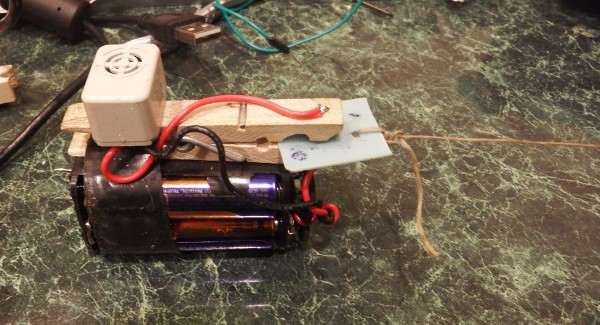
The version below includes a battery and a transistor socket. Stick the wires of a flashbulb into the socket and use the plastic tab as described above to make a flash-bulb warning of intruders.
Also of note: It's hard to see from the photo, there are 2 thumb tacks sticking out from the base of the battery. Take the whole unit and press it into the side of a tree or wooden molding and run the trip wire across the room to another thumbtack.
Takes about a minute to install 1 intruder sensor.
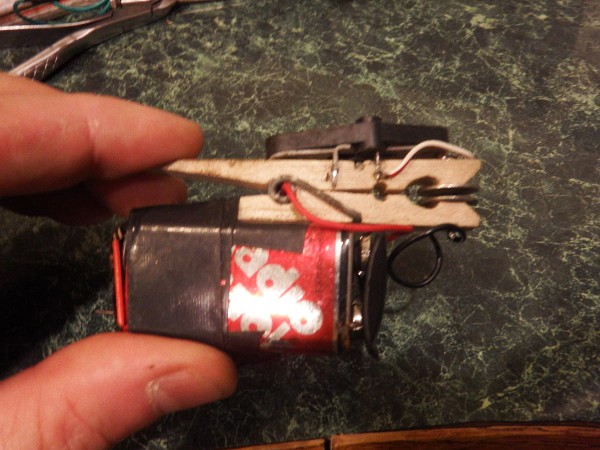
I probably shouldn't mention this, but mount a 35mm film canister on the clothespin, put the flashbulb *inside* the canister, and fill the canister with gunpowder.
This makes a very satisfying flash *and* bang for unwanted intruders!
It's also reasonably safe, assuming you use a plastic film canister and not a metal one.
I couldn't immediately find one of those or I would have posted an image.
Create an account to leave a comment. Already have an account? Log In.
Become a member to follow this project and never miss any updates

 Florian Festi
Florian Festi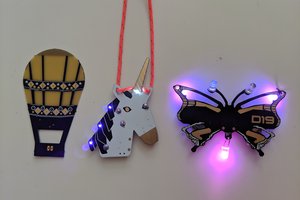
 adellelin
adellelin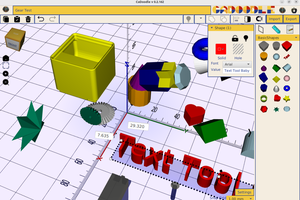
 Kevin Harrington
Kevin Harrington
 Supplyframe DesignLab
Supplyframe DesignLab